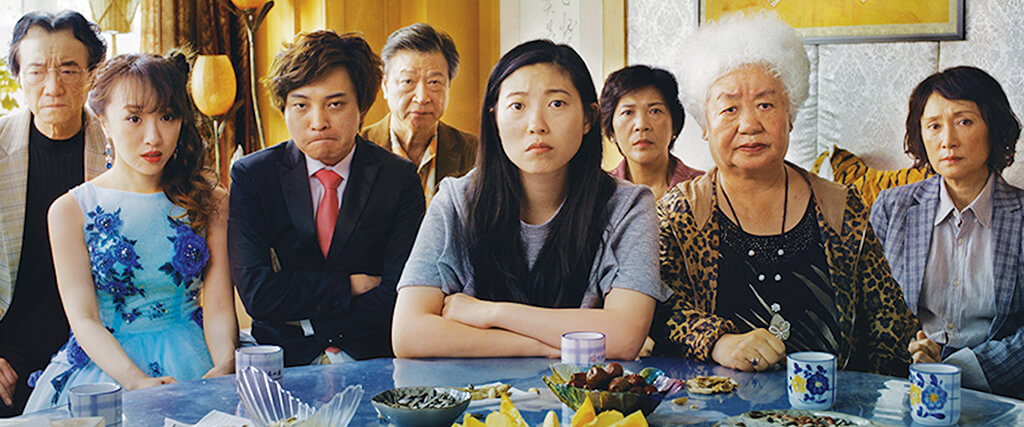
Sundance Recap and Reviews – Part 2
By Beau Stucki | February 11, 2019
Precariously situated in the icy mountains of northern Utah, the Sundance Film Festival is a haven for movie-lovers bold enough to crowd the small city during the snow-blown winter. The festival was founded by a-lister Robert Redford but prides itself as a champion for diverse independent cinema. The marketing this year was themed around “Risk” and that was reflected in the movie choices – for better and worse.
Over 2,000 feature films and more than 9,000 short films were submitted. Of those, only 112 of the former and 73 of the latter made the cut. Sundance is a competition and distribution festival – so the studio representatives were there, ready to purchase. Netflix, Amazon, A24, HBO, Sony, and others bought up titles you can expect to be hitting the big and small screen throughout the year.
In my first season attending as a member of the press, I was able to see just over 30 titles during the 10-day event.
My reviews will be published in three parts. Check out Part 1 and Part 3.
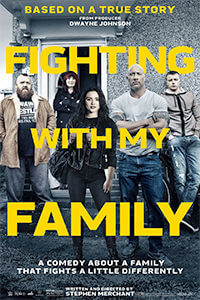 Fighting with My Family
Fighting with My Family
Surprise Screening
Stephen Merchant, the British creator and comedian known primarily for his celebrated collaborations with Ricky Gervais, crosses the pond and takes the helm of his first Hollywood hit. Even before its release, I say “hit” with confidence; the movie caters to the huge fan base of professional entertainment wrestling, it is full of attractive people, it boasts a lot of easy jokes, and it has a meta-role for the current blockbuster king, Dwayne “The Rock” Johnson.
With all these guarantees the movie ought to be able to swerve and deviate with security, but instead, its heart and humor stay as broad as possible. There is little to be found in this sports romp that isn’t expected—in fact, it isn’t far from the sort of film we might expect Merchant to make fun of or satirize. It would be a better movie if his influence were more directly felt.
The plot follows the real-life story of Saraya “Paige” Bevis (Florence Pugh) from her start in a family of fighters to her chance at the big time when she’s tapped for training by the WWE. From there it is a journey of self-discovery. Will Paige have enough of the right stuff to make it to the top?
For all its overly-safe choices, the movie makes some smart ones too. It is with a mild sense of relief that we discover Paige’s female rivals aren’t just the sorority gaggle of “ass and tits” as one character puts it. They move beyond a catty cliche, and we get a hint of diverse personality. The only villain in this story is self-doubt.
Another welcome decision was made in keeping Paige from being sexualized—she doesn’t spend the movie bouncing around in small outfits, and the camera doesn’t ogle—it’s not that sort of movie. However, it is perplexing how often we are asked to believe Paige is an underdog in looks or athleticism. Pugh’s face is a picture of pretty whether or not she wears a lip ring and, as impressive as each of the actress’ physique is, I’d put my money on the curvaceous Pugh over the other more slight figures in any real fight. 2.5/4 Stars.
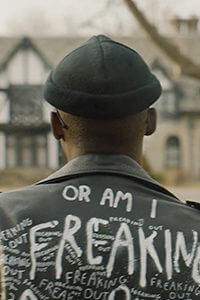 Native Son
Native Son
US Dramatic Competition
Native Son is a debut feature by the artist-cum-filmmaker Rashid Johnson. Here the eponymous novel by Richard Wright is carried from the war-weary cynicism of the 1940s to that of our fractured and partisan era in the 21st century. Bigger Thomas (Ashton Sanders) is a young black man in Chicago. A realist with the heart of a poet. In life, he is both unmoored and unambitious—more prone to observe than to act. Things begin to change for Bigger when his mom’s new beau pulls strings to get him a position as a driver for a wealthy and fair-minded businessman. Bigger’s acceptance of the job seems more an act of fate than of will and, as with other noir films, the act will draw him into fate’s irreversible embrace.
The job is a cushy change of pace for a hood kid. His room and board are provided, a luxury vehicle is at his disposal during off hours, and the pay is ample. More important than any of these changes is the introduction of the boss’ daughter Mary (played with a manic Fitzgerald-ian wildness by Margaret Qualley). Mary is openly drawn to Bigger. The nature of this attraction is unclear—and uncomfortable for Bigger. His girlfriend Bessie (KiKi Layne) is certainly disapproving, and the film places most its wisdom in her person.
As Native Son hits its most memorable scene, it abandons its dour sort of realism for allegory and metaphor. Motifs on invisibility become starkly visible, and the now sleeping sense of fatalism rears up with a vengeance. The transition is perhaps more jarring than intended. The heightened emotional acting in classic film noir is better suited to melodrama than the subdued approach of most modern performers. Bigger’s motivations descend into a selfishness that doesn’t resonate, and we are questioning the movie exactly when we ought to be more involved.
But it is, in fact, to the credit of Sanders and Layne that certain moments work so well. These are faces we can expect to see in other films soon. As HBO Films acquired the movie from A24 on the first day of the festival, it is likely audiences will first encounter the cast on the small screen. 2.5/4 Stars.
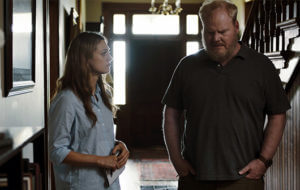 Light from Light
Light from Light
Next
From its opening images of ethereal fog, Light from Light invites us to consider what we cannot see. The movie follows a paranormal investigator—a ghost hunter, but it isn’t a ghost story in any traditional sense. The movie is grounded in reality, and reality includes things we can perceive but cannot explain. The characters are, like all of us, wading through ambiguity in some form. In relationships, in faith, in questions about finite time and the continuation of consciousness.
Among these characters, the most recognizable face belongs to comedian Jim Gaffigan. Here he plays a character whose sense of humor left him at the tragic accident of his wife’s death. It is he who has called upon a paranormal investigator (Marin Ireland) to see whether certain potentially spectral happenings around his house might be the doing of his departed spouse.
Paul Harrill chose to write and direct his movie with a meditative tone. He also made the inspired choice to keep it under 90 minutes—an unusual choice for contemplative films. The pace is just right—the movie understands that no amount of runtime will ever be able to fully plumb the depths of the questions it asks. Better to seep us in at a rate that doesn’t allow us to be distracted and then release us with enough energy to keep pondering. Especially when the end is not wholly unpredictable.
Light from Light has a refreshing quietness and an affectionate eye for detail. The characters are all recognizable, and our familiarity with them furthers the intimacy. The movie would benefit from more subtlety, particularly in its final moments, but it is nevertheless well acted, well photographed, and well measured. 3/4 Stars.
 The Death of Dick Long
The Death of Dick Long
Next
In a departure from the dramatic oomph we are used to from the Oscar darling studio A24, The Death of Dick Long is a bawdy hixploitation comedy.
It starts as a sort of mystery. Dick is dead, and his two closest pals are trying to keep the circumstances of his bloody demise hidden from the police, from friends, family, and from us. This obfuscation results in a lot of bumbling and panicky ineptitude, some of which allows for a clever retort or a silly sight-gag. The turning point, of course, comes when the truth is revealed; then the movie switches gear to let us see the toll the punchline has on the lives tangled in its web.
I won’t reveal the key moment here, but the whole of the story is essentially a crude barroom joke. If it is suitable at all, it is more suitable for a short film. But then its unsuitability is the very thing we are meant to find amusing. All this could perhaps be overlooked by those with a taste for the ribald and irreverent, except for the sincerity of the performances—more specifically the unyielding performance of Virginia Newcomb. She is an actress of such ability that we believe her completely. The choice to let her and her on-screen daughter (Poppy Cunningham) play real people in a cast of goofy caricatures only serves to darken the comedy to a sickening level. The dissonance is so great that we expect the movie has something to say—some message to convey. It doesn’t. It’s still just gunning for laughs. 1.5/4 Stars.
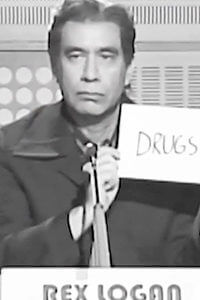 Documentary Now! Season 52 Preview
Documentary Now! Season 52 Preview
Special Events
Spoof and parody are essential pillars in the temple of comedy, but they can be petty or destructive. It is often easier for us to enjoy SNL style lampooning when it is about a politician we dislike or a blockbuster we found inane. So we are wise to be cautious with a series whose target is the most beloved and acclaimed documentaries of cinema history. What makes the third (jokingly called the 52nd) season of Documentary Now! work as well as it does is that the creators are making fun of something they love—and their admiration shows through.
Two episodes were shown. First a parody of Original Cast Album: Company and then one of Marina Abramovic: The Artist is Present. At Sundance, each was preceded by a clip from the original documentary. Showing a clip of the target material may seem a bit like a cheat in the way of an impersonator wearing the nametag of their subject, but mercifully the episodes are full of strong enough material to exist as entertainment in their own right, and the clips therefore serve more as a reminder.
The talent roster is impressive: Fred Armisen, Seth Meyers, Helen Mirren, John Mulaney, Richard Kind, and Cate Blanchett, among others. It’s a performer’s show, a chance to use skills that don’t often make it to the screen. The imitation itself is immensely skillful—sometimes too skillful—and as with a fraudulent painting, a layperson might struggle to tell the original from the fake. The songs seem like Broadway hits, the divas like divas, the exhibition art has all the gaudy insight of the real exhibition art—until, of course, they don’t. And that’s where the humor comes in.
The mimicry doesn’t end with the actors. Whenever possible, the original documentary team was contacted and mined for information about which lenses were used and how each scene was lit. A truly robust parody, the series is worth watching even as a curiosity of art looking at art. 3/4 Stars.
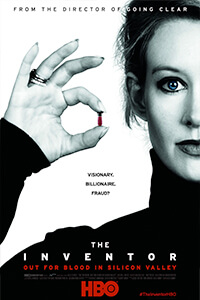 The Inventor: Out for Blood in Silicon Valley
The Inventor: Out for Blood in Silicon Valley
Documentary Premieres
The primary subject of The Inventory is Elizabeth Holmes and her climb from med-school dropout to entrepreneur extraordinaire, with a 10 billion dollar blood-testing company and a range of seemingly revolutionary technologies and procedures pitched to break new ground in preventative medicine and patient autonomy. However, it is soon apparent all is not what it seems to be.
Holmes plays out like Silicon Valley’s Becky Sharp Lite—but given our outside vantage, she is more enigmatic. Her person is instantly remarkable; low pitched voice, blonde hair, and ageless porcelain visage—with large doll-like blue eyes, inscrutable windows to a delusive soul. We spend a good deal of the film staring into those eager eyes, or rather they stare at us—and seem to calculate. She is somehow both charismatic and strangely charmless. The list of her backers, supporters, and admirers is a veritable who’s-who of the American empowered. Attorneys, journalists, politicians, business elites, and tech giants—all are convinced of what they hope to be true. Holmes is nothing if not a master saleswoman.
The Holmes painted for us by veteran documentarian Alex Gibney is obsessed with great upheavalers from days past and the myths which surround them—she has borrowed the iconic black turtleneck look from Steve Jobs, and her admiration for Thomas Edison runs so deep that she names her key technology after him.
With creative (if uneven) graphics and sterile colors, the film touches on capitalism, integrity, and risk. Adroitly it leaves questions of feminism to hover over the viewer’s mind, to be applied at each’s own discretion. In its strongest moments the film leads us to question our ambivalent veneration for market disruption and to contemplate the wisdom of fake-it-till-you-make-it. The movie’s greatest weakness is its length; we circle through many repetitions, and the redundancy will send many viewers to the remote control before reaching the (still pending) conclusion. HBO has the film, so it is likely it will receive a much needed trim down to a leaner 90 minutes. 2.5/4 Stars.
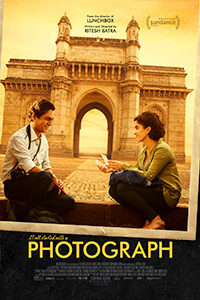 Photograph
Photograph
Premieres
The movies that make it from India’s booming film industry to American screens are usually distinguished in part by their bombastic musical energy and vibrant design. Photograph is a Hindi film with an entirely different rhythm, content to amble and stroll.
Perhaps it is unfair to compare and generalize modern Indian films in the way I just have. Regardless, Photograph is certainly inspired by the Western family of romantic films. With hints of An Affair to Remember (1957) or Sleepless in Seattle (1993), it also seems at moments to reach farther east to the films of Wong Kar Wai, like In the Mood for Love (2000). Unfortunately, wherever it’s drawing from, the movie is never enough of its own thing to inspire the warmth we want from the genre. It leaves us as cold as its blue-hued color pallet.
The ingredients are all there—there’s a meet-cute when disillusioned street photographer Rafi (Nawazuddin Siddiqui) shoots a portrait of the young ingénue Miloni (Sanya Malhotra), and there’s a fun scenario as Rafi gets Miloni to pose as his fiancée to satisfy the demands of his lovably sage and lovably overbearing grandmother (winningly portrayed by Farrukh Jaffar). But the movie remains so understated throughout that not only do we miss emotional beats, even little aspects of the plot seem to have wandered away before we reach them.
There are pleasing whimsical moments where we might smile sleepily, and the movie is more inert than actively bad, but we want more—it promises more. We yearn to see these characters in the movie that nearly was; the movie with more verve and wisdom. 2.5/4 Stars.
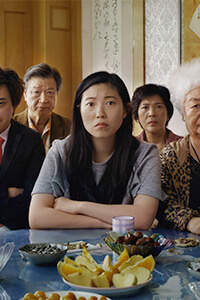 The Farewell
The Farewell
US Dramatic Competition
In her second feature film as writer-director, Lulu Wang displays a firm understanding of her medium. Too many comedies are an amusing string of gags with funny scripts and charismatic people —but they do not use the full toolbox of cinema. The Farewell is not one of these. Our view is always alive—background, foreground, framing, sound, silence, pauses, and cuts are all used to involve, divert, and portray.
In calling the film a comedy, I am simplifying things. It is comical in the way life is comical. It is also absurd in the way death is absurd. And the movie is as much about death as it is about life. “Based on an actual lie,” the opening titles tell us. The family matriarch has Stage 4 lung cancer. She’s been given three months to live, but her family decides to forge her bill of health and keep the diagnosis a secret from her. How each member of the family carries this burden is what we get to watch for 98 engaging minutes.
Rising star Awkwafina leads the cast, and her performance is entirely charming and thoroughly relatable (this is because both she and Wang know how to elicit relatability through perspective and minutiae) as she navigates the awkwardness and emotions of family, age, ambiguity, and tradition. The stuff of life. She isn’t alone in charming us. This is one of a rare breed of movie where each character in a rich ensemble has our sympathy from start to finish.
Somehow I’ve made it this far without mentioning that this family is Chinese. At least, ethnically Chinese. Some members of the family are American, and some are not. There is no clash of cultures, but there is a lively feature-length conversation between them, and this exchange is one of the chief delights of a delightful movie. 4/4 Stars.

Beau Stucki is a traveling writer and entrepreneur. He co-runs the film discussion group This Movie Club.
Unlock More from Deep Focus Review
To keep Deep Focus Review independent, I rely on the generous support of readers like you. By joining our Patreon community or making a one-time donation, you’ll help cover site maintenance and research materials so I can focus on creating more movie reviews and critical analysis. Patrons receive early access to reviews and essays, plus a closer connection to a community of fellow film lovers. If you value my work, please consider supporting DFR on Patreon or show your support in other ways.
Thank you for your readership!
Brian Eggert | Critic, Founder
Deep Focus Review




